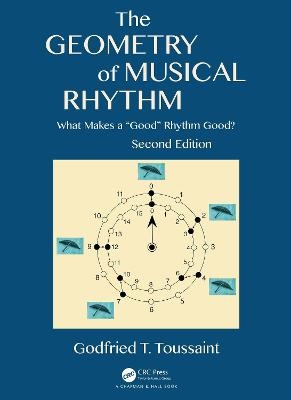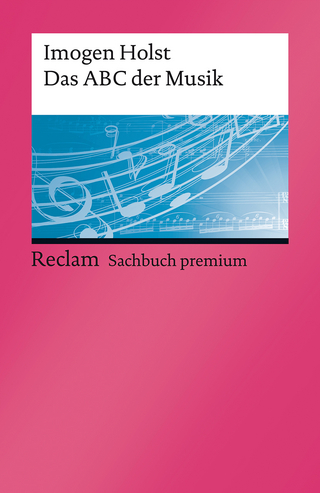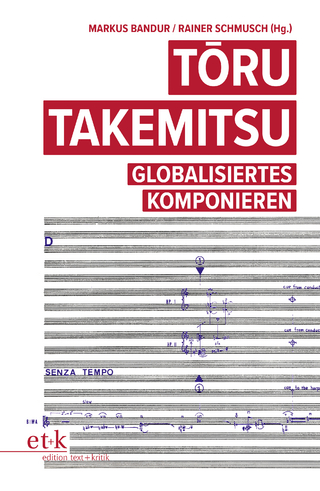
The Geometry of Musical Rhythm
Crc Press Inc (Verlag)
978-0-8153-5038-5 (ISBN)
- Titel z.Zt. nicht lieferbar
- Versandkostenfrei innerhalb Deutschlands
- Auch auf Rechnung
- Verfügbarkeit in der Filiale vor Ort prüfen
- Artikel merken
The original edition of The Geometry of Musical Rhythm was the first book to provide a systematic and accessible computational geometric analysis of the musical rhythms of the world. It explained how the study of the mathematical properties of musical rhythm generates common mathematical problems that arise in a variety of seemingly disparate fields. The book also introduced the distance approach to phylogenetic analysis and illustrated its application to the study of musical rhythm. The new edition retains all of this, while also adding 100 pages, 93 figures, 225 new references, and six new chapters covering topics such as meter and metric complexity, rhythmic grouping, expressive timbre and timing in rhythmic performance, and evolution phylogenetic analysis of ancient Greek paeonic rhythms. In addition, further context is provided to give the reader a fuller and richer insight into the historical connections between music and mathematics.
Godfried T. Toussaint is a Canadian computer scientist born in Belgium. Presently, he is a Research Professor of Computer Science at the University of New York, Abu Dhabi, United Arab Emirates, a Research Affiliate at the Massachusetts Institute of Technology in the Computer Science and Artificial Intelligence Laboratory, a Researcher in the Center for Interdisciplinary Research in Music Media and Technology (CIRMMT) in the Schulich School of Music at McGill University, and an Emeritus Professor of Computer Science at McGill. After receiving a PhD in electrical engineering from the University of British Columbia in Vancouver, Canada, he taught and did research at the School of Computer Science at McGill University, in the areas of information theory, pattern recognition, pattern analysis and design, computational geometry, instance-based learning, music information retrieval, and computational music theory. In 1978, he received the Pattern Recognition Society’s Best Paper of the Year Award and in 1985 he was awarded a Senior Killam Research Fellowship by the Canada Council. In May 2001, he was awarded the David Thomson Award for excellence in graduate supervision and teaching at McGill University. He is a founder and cofounder of several international conferences and workshops on computational geometry. He is an editor of several journals, has appeared on television programs to explain his research on the mathematical analysis of flamenco rhythms, and has published more than 360 papers. In 2009, he was awarded a Radcliffe Fellowship by the Radcliffe Institute for Advanced Study at Harvard University, for the 2009–2010 academic year, to carry out a research project on the phylogenetic analysis of the musical rhythms of the world. After spending an additional year at Harvard University, in the music department, he moved in August 2011 to New York University in Abu Dhabi.
What Is Rhythm?. A Steady Beat. Timelines, Ostinatos, and Meter. The Wooden Claves. The Iron Bells. The Clave Son. Six Distinguished Rhythm Timelines. The Distance Geometry of Rhythm. Classification of Rhythms. Binary and Ternary Rhythms. The Isomorphism of Rhythm and Scale. Binarization, Ternarization, and Quantization of Rhythms. Syncopated Rhythms. Necklaces and Bracelets. Rhythmic Oddity. Off-Beat Rhythms. Rhythm Complexity. Dispersion Problems and Maximally Even Rhythms. Euclidean Rhythms. Leap Years: The Rhythm of the Stars. Approximately Even Rhythms. Rhythms and Crystallography. Complementary Rhythms. Radio Astronomy and Flat Rhythms. Deep Rhythms. Shelling Rhythms. Phantom Rhythms. Reflection Rhythms and Rhythmic Canons. Toggle Rhythms. Symmetric Rhythms. Odd Rhythms. Other Representations of Rhythm. Rhythmic Similarity and Dissimilarity. Regular and Irregular Rhythms. Evolution and Phylogenesis of Musical Rhythm. Rhythmic Combinatorics. What Makes the Clave Son Such a Good Rhythm?. The Origin, Evolution, and Migration of the Clave Son. Epilogue. References. Index.
| Erscheinungsdatum | 29.08.2019 |
|---|---|
| Reihe/Serie | AK Peters/CRC Recreational Mathematics Series |
| Zusatzinfo | 12 Tables, black and white; 300 Illustrations, black and white |
| Verlagsort | Bosa Roca |
| Sprache | englisch |
| Maße | 210 x 280 mm |
| Gewicht | 840 g |
| Themenwelt | Kunst / Musik / Theater ► Musik ► Musiktheorie / Musiklehre |
| Mathematik / Informatik ► Mathematik ► Geometrie / Topologie | |
| Naturwissenschaften ► Physik / Astronomie | |
| ISBN-10 | 0-8153-5038-4 / 0815350384 |
| ISBN-13 | 978-0-8153-5038-5 / 9780815350385 |
| Zustand | Neuware |
| Haben Sie eine Frage zum Produkt? |
aus dem Bereich


